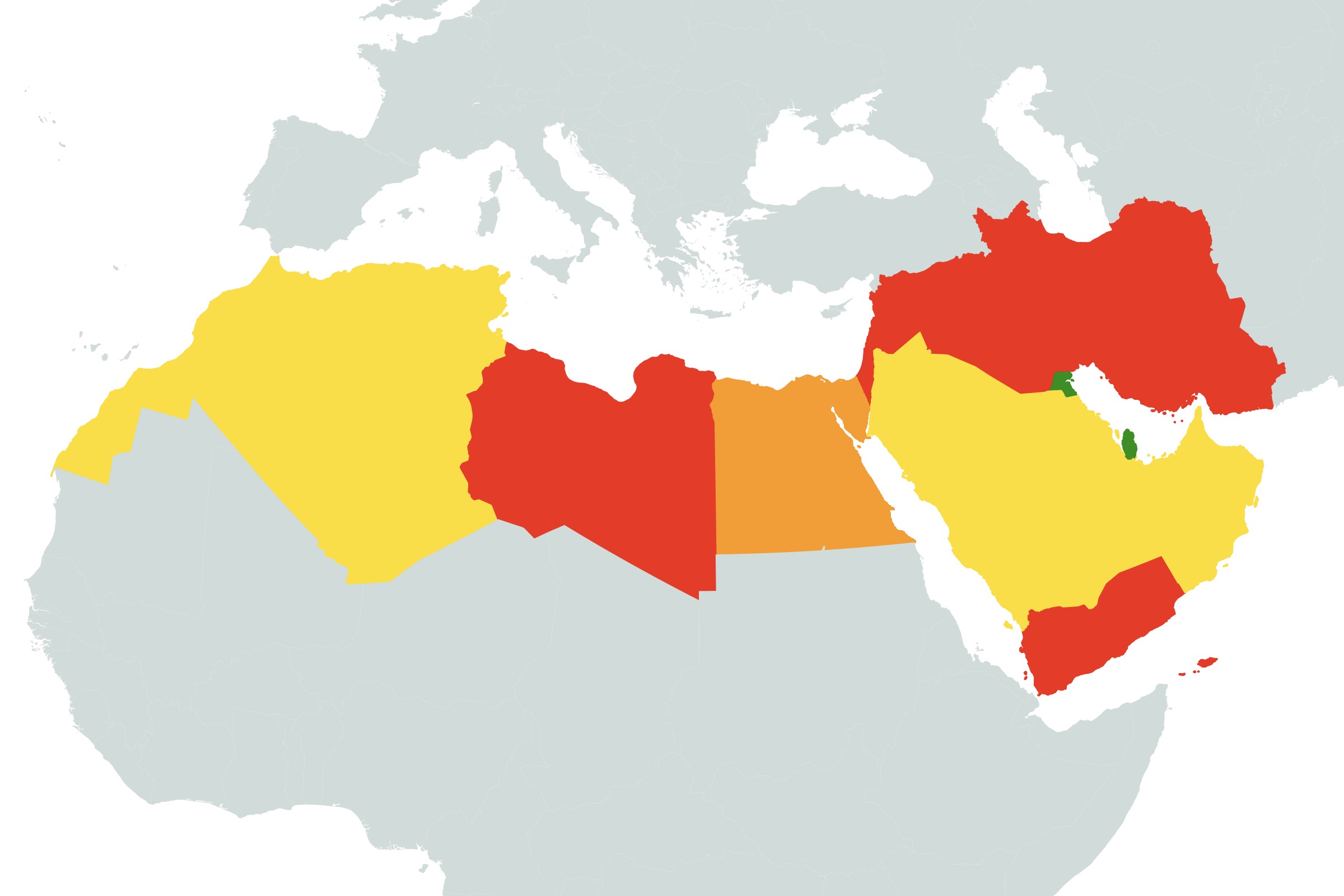
Map shows U.S. Middle East travel warnings as possible Iran war looms
How did your country report this? Share your view in the comments.
Diverging Reports Breakdown
Map Shows U.S. Middle East Travel Warnings as Possible Iran War Looms
U.S. State Department travel warnings for the Middle East show high levels of tension. Americans advised to steer clear of many of the region’s countries or to show extra caution. Travel warnings show risk for travelers of being caught in open conflict or of falling victim to attacks by U.S.-designated terrorist groups. Iran has fired some 400 missiles towards Israel along with drones in retaliation for the Israeli attacks, according to The Associated Press. At least 24 people have been killed in Israel, it said, while quoting a Washington-based Iranian rights group as saying at least 585 people had died in attacks on Iran. The State Department: “The Department of State has no higher priority than the safety and security of U.s. citizens overseas””Do not travel due to armed conflict, terrorism, and civil unrest,” says the updated travel advice for Israel.
Newsweek AI is in beta. Translations may contain inaccuracies—please refer to the original content.
A map of U.S. State Department travel warnings for the Middle East shows Americans being advised to steer clear of many of the region’s countries or to show extra caution, with Iran and Israel at war and the possibility of a looming U.S. attack on Iran.
A Level 4: “Do Not Travel” update for Israel was issued for Israel on June 16 as it came under heavy missile bombardment from Iran. Newsweek contacted the State Department for comment.
Why It Matters
The travel warnings show the high levels of tension across the region and risk for travelers of being caught in open conflict or of falling victim to attacks by U.S.-designated terrorist groups.
Those risks are potentially rising as signs grow from U.S. President Donald Trump and from military deployments that the United States itself could become involved in attacks on Iran and its nuclear program.
Travel advisories are not only a warning for travelers, but are also taken into account by insurance companies, meaning that those who travel to the highest-risk areas are not insured unless they take out expensive specialist cover.
What To Know
Israel has now joined the highest level of State Department advisories against all travel following the missile barrages fired by Iran since Israel launched airstrikes on its military establishment, nuclear program and other targets late last week. The U.S. embassy in Jerusalem has been closed.
Iran has fired some 400 missiles towards Israel along with drones in retaliation for the Israeli attacks, according to The Associated Press. At least 24 people have been killed in Israel, it said, while quoting a Washington-based Iranian rights group as saying at least 585 people had been killed in attacks on Iran.
“Do not travel due to armed conflict, terrorism, and civil unrest,” says the updated travel advice for Israel.
“The security situation in Israel, including Tel Aviv and Jerusalem is unpredictable, and U.S. citizens are reminded to remain vigilant and take appropriate steps to increase their security awareness as security incidents, including mortar and rocket fire and armed UAV intrusions and missiles, can take place without warning.”
Travel Warnings
Israel joins countries in the region that had long been on the list of those where all travel is advised against, including Iran itself, Syria, Iraq, Lebanon, Libya and Yemen.
In the next category down of Level 3: Reconsider travel is Egypt, a U.S. ally and also a popular tourist destination with archaeological attractions such as the pyramids and beach resorts.
Much of the region falls in the category of Level 2: Exercise Increased Caution. That includes countries such as Saudi Arabia, Oman and the United Arab Emirates — which actually has five of the top 10 safest cities in the world according to the Numbeo safety index.
Only two countries fall into the lowest risk category of “Exercise Normal Precautions”: Qatar and Kuwait, both of which have U.S. military installations.
What People Are Saying
U.S. State Department: “The Department of State has no higher priority than the safety and security of U.S. citizens overseas. Information contained in these advisories reflects an assessment of threats only insofar as they may impact U.S. citizens, nationals, and legal residents.”
What Happens Next
The security situation in the Middle East is evolving rapidly and much will depend on whether the United States also gets involved in the war with Iran, which could raise a greater risk for U.S. bases and citizens across the region.
Source: https://www.newsweek.com/map-shows-us-middle-east-travel-warnings-possible-iran-war-looms-2087134
